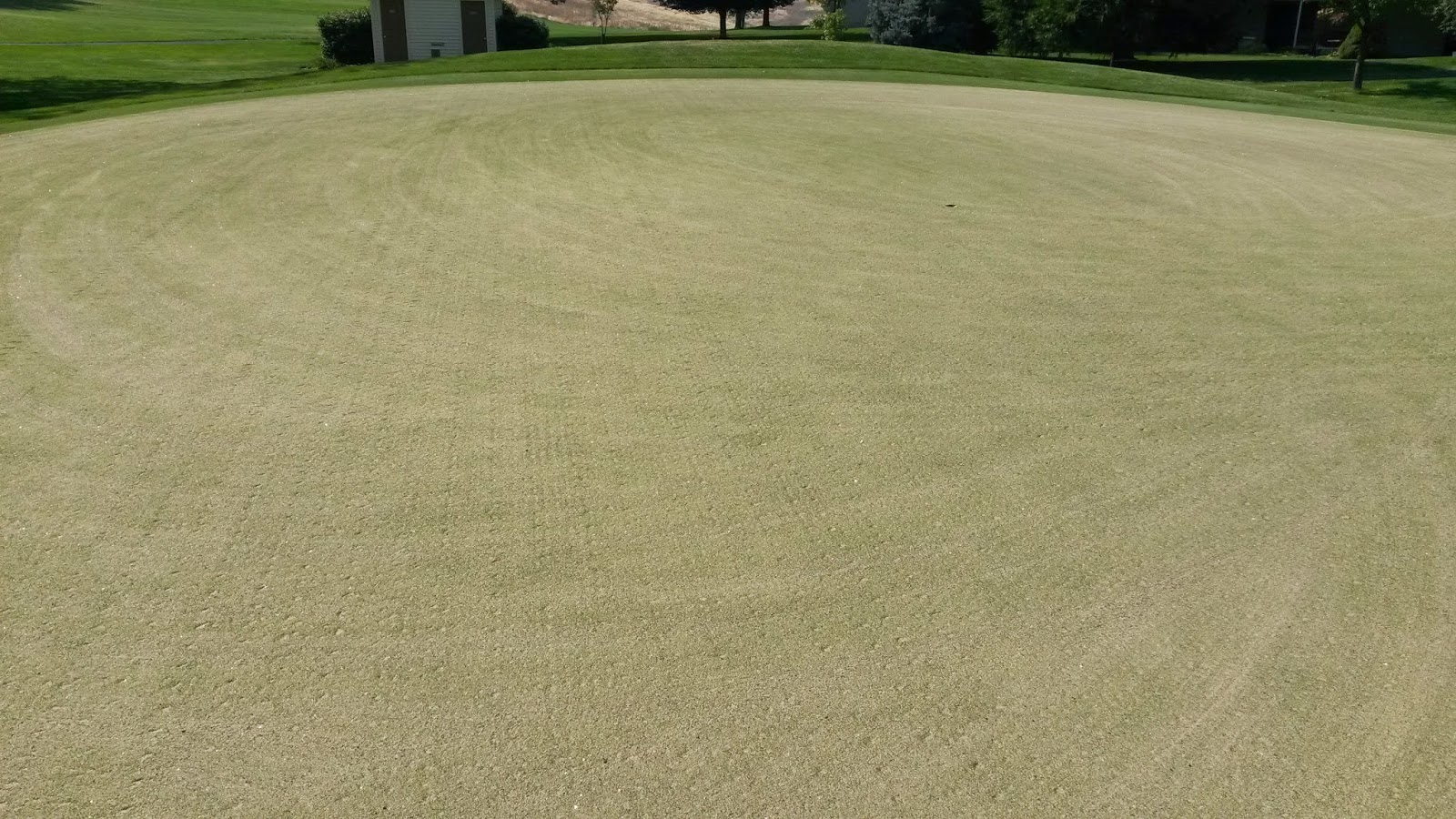Greens were aerified on Monday and Tuesday while the course was closed and the entire operation went very good. Mother nature really helped us out with the sunny 90 degree weather. One of the hardest parts is getting the sand to dry and properly fill the holes, with the ultra dry sand it worked very good this fall. As I have stated before, there are many methods to aerification and you have to understand your end goal as to which operation you will perform. This year our soil tests show that our organic matter content is very close to where we want it so we decided to not pull a core and go with both 1) deep tining - to increase infiltration, allow roots to grow deeper, and incorporate as much sand as far down as we could in he older sad profile of our USGA greens, 2) smaller solid tines at a very close spacing to incorporate as much sand as possible into the upper 3 inches of the organic matter layer.
Topdressing goes down first so the aerification machines vibration will help work it into the turf
Deep tining machine - 1" tines 8" deep with 4" spacing
After the deep tining
Followed by 1/2" sold tines with a 1 1/4" x 1 1/4" spacing
Double roll to smooth everything out
Finished with brushing and irrigation to water everything in.
The finished product after 2 days
Extra sand is still on the surface because I want to incorporate more into the turf canopy and some holes will open up as we continue to brush and water. Right now all the holes look full, but some are bridged and have air pockets down in the hole. As we continue to brush and water this sand will settle down and the extra sand will be brushed into the holes.
The future will be continued brush and irrigate, with a Thursday afternoon roll when it is dry and then start mowing Friday morning, followed by alternation of mow and roll for the next week. Typically in 4-5 days I will have them pretty well cleaned up and putting smooth.























.JPG)
.JPG)

.JPG)
.JPG)



